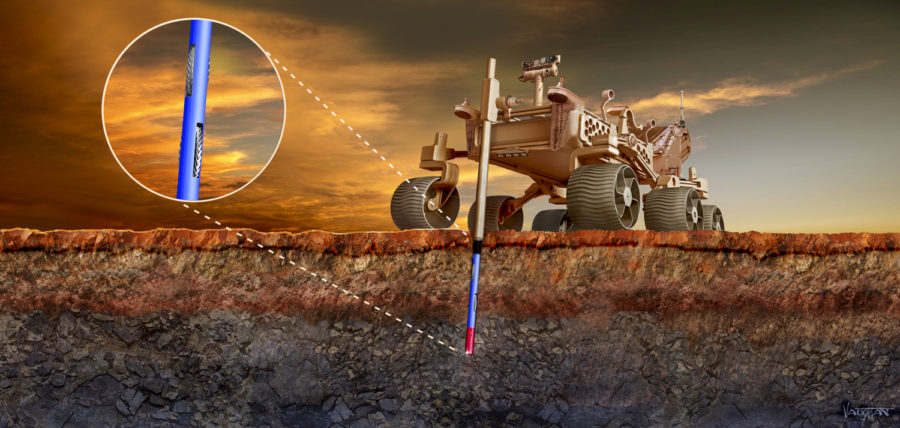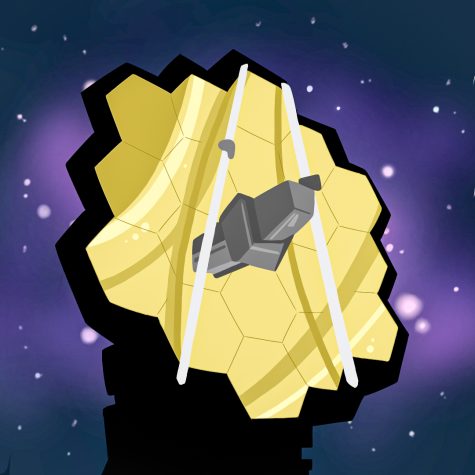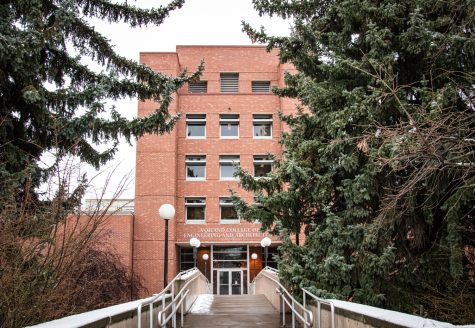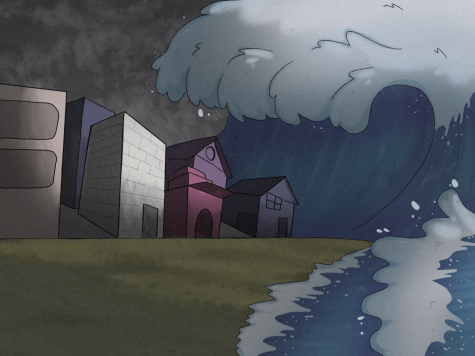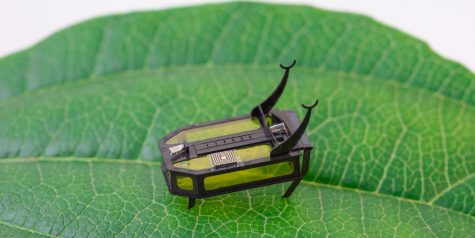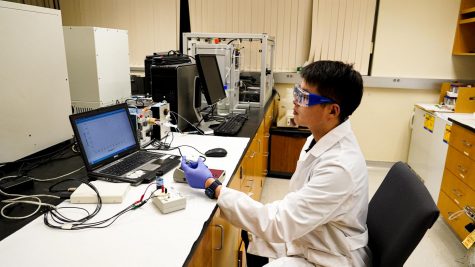Students hope to find water on Mars
Team received NASA Innovative Advanced Concepts award, won $125,000 toward project
COURTESY OF PLANET ENTERPRISES
The drill will have an abrasive head to get through thick layers of ice and dirt on the Red Planet. The team is creating blueprints and 3D printing drill models.
April 8, 2021
Two WSU students are designing a drill to reach water on Mars.
After listening to an episode of the podcast Planetary Radio, Quinn Morley, WSU undergraduate in mechanical engineering at the Olympic College-Bremerton program, learned of the discovery of potential liquid water on Mars and started this project, he wrote in an email.
The drill will need to penetrate through roughly a mile of ice before reaching water on Mars, Morley wrote in an email.
Similar drills are often used in Antarctica to penetrate ice sheets, said Tom Bowen, WSU senior in mechanical engineering at the Olympic College-Bremerton program.
Morley recruited Bowen to be part of the research project after the two were lab partners in an electric circuits course, Morley said in an email.
Morley and Bowen are the first all-undergraduate team to win a NASA Innovative Advanced Concepts (NIAC) award, Morley wrote in an email.
The research is currently in Phase I, Bowen said. Blueprints of the model are being designed. The team is 3D printing drill models with a $125,000 grant from the NIAC program.
The drill will have an abrasive head to get through the thick layers of ice and dirt, he said.
Mars has less gravity than Earth and a thinner atmosphere, Bowen said. This makes the ice harder to penetrate and less predictable.
When energy from the drill is applied to the ice, it may cause the ice to rise above the boiling point and vaporize or liquefy, he said. The ice may turn into slush, making it difficult to work with.
Bowen said the drills are bots and designed to be resilient, but if they fail there will be more than a dozen backup drills.
Commands will be sent to the bots from Earth, but there will be a lag time, he said. By the time information from the bots has been received, any number of things could have occurred.
“The probes we send to another planet have to be smart enough to do behaviors on their own,” Bowen said.
The students hope to understand how life develops on other planets as well as have a better understanding of life on Earth, he said.
“The idea of how life began involves liquid water,” Bowen said.
Reaching water on Mars will allow researchers to see if there are other life forms or organisms in underground lakes, he said. It will also open the possibility to set up human colonies on other planets.
Water can be used to fuel rockets, grow plants, and it can be turned into oxygen to breathe, Bowen said.
Before probes or technology are sent to other planets, they are usually tested for decades beforehand, he said.
The research team will spend the next nine months exploring the feasibility of the project design. The Phase II application will be due in December 2021, Morley wrote in an email.
If the project is approved for Phase II, the team will start building the drill prototype with additional funding from NASA, he wrote in an email.
Bowen said replicas of the drill will then be tested on ice created with similar properties to the ice on Mars.
The students remain optimistic that if there is life on other planets, they will find it, Bowen said.
“I would imagine that if we go poking around in places long enough, we are going to find life all over the place,” he said.

